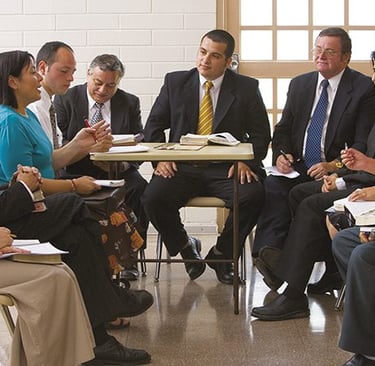How to Discuss Missionary Work in Ward Councils
Utilizing Member Tools and My Covenant Path to Discuss Missionary Work in Ward Councils
Pace Satterthwaite


Using My Covenant Path and Member Tools in Ward Council
Ward council is one of the most powerful tools we have to support new members and those learning about the gospel. When used effectively, it ensures that no one falls through the cracks. As leaders over missionary work, we need to make sure that both My Covenant Path and Member Tools are being used consistently in these meetings to help new members stay on the covenant path and to ensure investigators are receiving the support they need.
Step 1: Make New and Returning Members a Priority
New members and investigators should be a standing agenda item in every ward council. Before each meeting, come prepared with a list of recent converts, those preparing for baptism, and returning members. If their names are not consistently brought up, their needs can easily be forgotten.
Step 2: Use Member Tools to Stay Organized
During ward council, pull up Member Tools and go to the “New and Returning Members” and “Part-Member Families” sections. This will help you:
Identify recent converts who need ministering assignments
See which investigators and part-member families are in the ward boundaries
Ensure that someone is consistently reaching out to them
Track progress and make sure they are being integrated into the ward
Many wards struggle with retention because new members get lost in the shuffle. By checking Member Tools every week, you create a system that keeps them in focus.
Step 3: Use My Covenant Path to Guide Discussions
Once a new member is baptized, they need a clear path forward. My Covenant Path provides that. In ward council, use it to discuss which steps each new member has completed and what they need next. Focus on key milestones such as:
Have they received a calling?
Have they participated in proxy baptisms?
Have they received a patriarchal blessing?
Are they attending church and feeling connected to the ward?
By using My Covenant Path as a roadmap, ward leaders can ensure that new members are progressing in their discipleship and not just attending church without direction.
Step 4: Assign the Right Ministers and Mentors
One of the biggest factors in retention is friendship. Every new member should have strong ministering brothers and sisters who will:
Teach the recent convert lessons
Help them with gospel study
Encourage them to get involved in church activities
Check-in regularly and offer support
Ward council should review ministering assignments to make sure the right people are in place. A new convert who is left to figure things out alone is far more likely to drift away.
Step 5: Hold Leaders Accountable
As a ward mission leader or high councilor, one of your key roles is to make sure these discussions don’t stop after one meeting. Each week, follow up on the action items from ward council. If someone was assigned to help a new member attend the temple, check in and see if it happened. If a mentor was asked to review My Covenant Path with a recent convert, ask for a progress update.
When ward councils consistently use My Covenant Path and Member Tools, new members thrive. They feel supported, they grow in their faith, and they stay. If we do not have a structured plan, they often struggle and disappear.
What Can You Do This Week?
At your next ward council, make sure:
You pull up Member Tools and go over new members and investigators
You use My Covenant Path to track their progress
You assign strong ministers and mentors
You follow up and make sure action items are completed
Retention does not happen by accident. It happens when leaders are intentional and proactive. Let’s do our part to keep new members on the covenant path.
